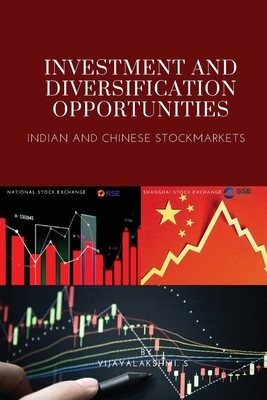
- We will send in 10–14 business days.
- Author: Vijayalakshmi S
- Publisher: Vijayalakshmi. S
- ISBN-10: 933538464X
- ISBN-13: 9789335384641
- Format: 15.2 x 22.9 x 0.7 cm, softcover
- Language: English
- SAVE -10% with code: EXTRA
Investment and Diversification Opportunities in Indian and Chinese Stock Markets (e-book) (used book) | bookbook.eu
Reviews
Description
Major findings are; 1) Indian market behave asymmetric and proved leverage effectin all the three periods considered, whereas the Chinese market shows different leverage patterns with reverse asymmetry when crisis is accounted.
2) The trade-off between risk and return varies due to the different state of market. In pre-crisis period both the market evidenced positive risk-return trade off, as expected from the theory however in post-crisis Nifty return is negatively related to its volatility which is contrary to the theory.
3) The conditional volatility persisted for more days in Chinese market than Indian, the HL Calculator shows that Shanghai Composite takes more time to return back to its mean with long lasting impact evidenced in positive shocks, leading to reject the theoretical mechanism behind the asymmetry which says negative shocks increase conditional volatility substantially.
EXTRA 10 % discount with code: EXTRA
The promotion ends in 18d.14:17:14
The discount code is valid when purchasing from 10 €. Discounts do not stack.
- Author: Vijayalakshmi S
- Publisher: Vijayalakshmi. S
- ISBN-10: 933538464X
- ISBN-13: 9789335384641
- Format: 15.2 x 22.9 x 0.7 cm, softcover
- Language: English English
Major findings are; 1) Indian market behave asymmetric and proved leverage effectin all the three periods considered, whereas the Chinese market shows different leverage patterns with reverse asymmetry when crisis is accounted.
2) The trade-off between risk and return varies due to the different state of market. In pre-crisis period both the market evidenced positive risk-return trade off, as expected from the theory however in post-crisis Nifty return is negatively related to its volatility which is contrary to the theory.
3) The conditional volatility persisted for more days in Chinese market than Indian, the HL Calculator shows that Shanghai Composite takes more time to return back to its mean with long lasting impact evidenced in positive shocks, leading to reject the theoretical mechanism behind the asymmetry which says negative shocks increase conditional volatility substantially.


Reviews